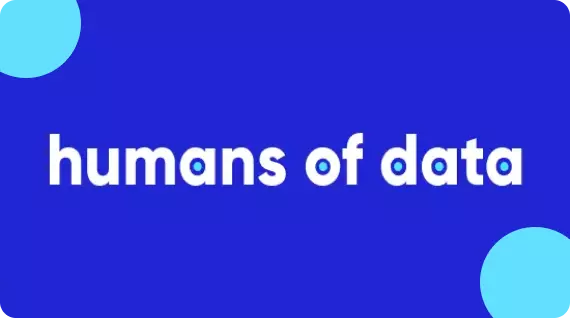Data Mesh vs Data Fabric: Which Approach Fits Your Needs in 2024?
Share this article
The main difference between data mesh and data fabric is their approach to data management. Data mesh decentralizes data ownership, allowing domain teams to manage their data as products. Data fabric, on the other hand, integrates and automates data management across environments, using AI to ensure data accessibility and consistency across systems.
Unlock Your Data’s Potential With Atlan – Start Product Tour
According to James Serra, an industry advisor and data and AI solution architect at Microsoft, a data fabric is technology-centric, while a data mesh focuses on organizational change.
Let’s understand both approaches and then explore their differences.
Table of contents #
- Is data fabric the same as data mesh? Let’s explore
- Key benefits of implementing these approaches
- Pros and cons of each approach for your organization
- Five factors to consider
- Data mesh vs. data fabric: How does each approach fare when it comes to data governance and security?
- How does each approach fare when it comes to data quality?
- Data mesh vs. data fabric: Which one is best for your enterprise?
- How to run a data maturity survey to pick the best approach for you
- How Atlan Supports Data Mesh Concepts
- FAQs on Data mesh vs Data Fabric
- Data mesh vs. data fabric: Related reads
Is data fabric the same as data mesh? Let’s explore #
The data mesh is a design concept that’s more about people and processes, whereas the data fabric is an architecture to tackle data and metadata complexity. Let’s explore the approaches further.
Data mesh is a new approach coined by Zhamak Dehghani that advocates for decentralized data architecture.
The data mesh suggests that each business domain is responsible for hosting, preparing, and serving its data to its own domain and larger audience. This allows flexible and autonomous data teams to build and manage their own data products, promoting data ownership and accountability.
Gartner calls it a solution architecture for the specific goal of building business-focused data products.
Data fabric is a centralized approach to data architecture. Gartner calls it a design concept that serves as an integrated layer (fabric) of data and connecting processes.
The data fabric advocates for setting up a unified data layer to provide a single source of truth for data. This ensures data quality, consistency, and security while allowing different teams to access and manage data easily.
It’s crucial to note that the data fabric is different from a data warehouse or a data lake. Here’s how James Serra puts it:
“A data fabric expands on the architecture of a data warehouse. The data fabric includes building blocks such as data pipeline, data access, data lake, data store, data policy, ingestion framework, and data visualization.”
What are the key benefits of implementing these approaches? #
Both data mesh and data fabric offer distinct benefits for organizations looking to improve their data management and analytics capabilities.
Here are the key benefits of implementing each approach:
Benefits of data mesh #
The data mesh enables a decentralized approach to data ownership and governance, allowing for greater agility and scalability in the data processing.
The benefits of data mesh include:
- Domain ownership
- Decentralization and scalability
- Innovation and agility
- Cross-functional collaboration
- Tailored data quality
Let’s explore each benefit further.
Domain ownership #
Data mesh allows domain teams to take ownership and manage their data products. This leads to better alignment with domain-specific needs and improved responsiveness to changing requirements.
Decentralization and scalability #
The decentralized nature of data mesh enables organizations to scale their data management efforts more effectively. This is achieved by distributing responsibilities across domain teams, avoiding bottlenecks and single points of failure.
Innovation and agility #
Data mesh fosters innovation by giving domain teams autonomy over their data products. So, teams can experiment with new technologies and approach that best suit their domain requirements.
Cross-functional collaboration #
Data mesh promotes cross-functional collaboration and communication by encouraging data sharing and standardization of data product APIs. This can improve data-driven decision-making across the organization.
Tailored data quality #
Data mesh enables domain teams to implement data quality measures that are specific to their domain requirements. This ensures that data products meet the needs of their consumers.
Read more about data mesh here.
Benefits of data fabric #
Data fabric supports a centralized approach to data architecture with a single source of truth for data. This ensures data quality, consistency, and security while allowing different teams to access and manage data easily.
The benefits of data fabric include:
- Centralized data management
- Standardization and consistency
- Streamlined analytics and reporting
- Data lineage and transparency
- Simplified data infrastructure
Let’s explore each benefit further.
Centralized data management #
Data fabric provides a unified data platform that simplifies data integration, storage, processing, and access across organizations. This improves overall data visibility and consistency.
Standardization and consistency #
Data fabric enables organizations to enforce consistent data governance, security, and quality policies by centralizing data management. This ensures that data adheres to established standards.
Streamlined analytics and reporting #
Data fabric provides a centralized platform for analytics and reporting. This makes it easier for users to access and analyze data from multiple sources, reducing the time and effort required to generate insights.
Data lineage and transparency #
Data fabric promotes data lineage and transparency, allowing users to trace the origin and transformations of data. This builds trust in the data and facilitates better decision-making.
Simplified data infrastructure #
Data fabric can assist organizations in simplifying their data infrastructure by abstracting the complexities of integrating different data sources and technologies. This makes it easier for users to access and work with data.
Read more about data fabric here.
Data mesh vs. data fabric: Pros and cons of each approach for your organization #
Both data mesh and data fabric can offer various benefits but also come with some potential drawbacks.
The decentralized nature of the data mesh allows organizations to scale their data management efforts more effectively by distributing responsibilities across domain teams.
As mentioned under the benefits above, this leads to improved responsiveness to changing requirements, better scalability, and agility. It also ensures that there are no bottlenecks and single points of failure.
However, it can also lead to inconsistent data practices, coordination and collaboration challenges, increased complexity, and reliance on standardization.
Meanwhile, the data fabric centralizes data management, simplifying data integration, storage, processing, and access across the organization. It enables consistent data governance, security, and quality policies and streamlines analytics and reporting. You can also optimize resource utilization, reducing redundant data storage and processing tasks.
However, the centralized nature may lead to potential bottlenecks, slower responsiveness to domain-specific needs, dependency on a centralized team, and scalability challenges.
Centralized data management may also restrict innovation and experimentation. That is because teams may not have the autonomy to explore new technologies and approach best suited to their domain requirements.
Data mesh vs. data fabric: Five factors to consider #
To decide between data mesh and data fabric, you should consider the following five factors:
- Organizational structure and culture
- Complexity and scale
- Technical maturity
- Data governance and security
- Speed of implementation and resource availability
Let’s see how each of these factors applies to the data mesh and the data fabric.
1. Organizational structure and culture #
- Data mesh: Teams own and manage their data products. This is suitable for organizations that have cross-functional collaboration and autonomy.
- Data fabric: You set up a unified data layer across the organization. This is suitable for centralized IT and data management structures.
2. Complexity and scale #
- Data mesh: It’s ideal for complex, large-scale data ecosystems where multiple domain teams must work independently and share data products.
- Data fabric: It’s ideal for organizations that want a unified data platform and can benefit from a single source of truth, regardless of the scale and complexity.
3. Technical maturity #
- Data mesh: It requires a high degree of technical maturity, as it depends on domain teams having the necessary skills to manage their data products independently.
- Data fabric: It’s focused on building a seamless and unified data platform, which may be easier to manage for organizations with a less mature data engineering team.
4. Data governance and security #
- Data mesh: It promotes data governance and security through ownership and accountability of domain teams. However, this can be challenging to enforce across multiple teams.
- Data fabric: It centralizes data governance and security, making it easier to enforce policies across the organization.
5. Speed of implementation and resource availability #
- Data mesh: It could take longer to implement as it requires establishing data product ownership and infrastructure for each domain team.
- Data fabric: can be implemented more quickly if there is a strong centralized data engineering team in place.
Data mesh vs. data fabric: How does each approach fare when it comes to data governance and security? #
While both approaches can address data security and governance, they do so in different ways.
Data mesh relies on domain teams taking ownership of their data products and adhering to organization-wide standards. Meanwhile, the data fabric centralizes security and governance practices, streamlining the implementation and enforcement of these standards.
Let’s explore the differences between data mesh vs. data fabric further.
Data mesh and data governance practices #
The data mesh promotes a decentralized approach to data management, with domain teams being responsible for the security of their data products. This can lead to tailored security measures that are specific to the needs of each domain.
However, it also requires a high degree of collaboration and coordination across teams to maintain consistent security practices.
Data governance is enforced through the ownership and accountability of domain teams. Each team is responsible for the quality, lineage, and metadata of their data products, ensuring that the data is well-documented and adheres to the organization’s data standards.
So, a potential challenge with data governance in the mesh approach is maintaining consistent governance practices across different domain teams. This requires strong collaboration and communication, as well as the establishment of organization-wide data governance standards for all domains.
Data fabric and data governance practices #
Data fabric centralizes data management, which can make it easier to enforce consistent security practices across the entire organization. A unified data layer allows for the implementation of standard security measures, such as encryption, access controls, and auditing, reducing the potential for inconsistencies in security practices.
Data fabric also centralizes data governance, making it simpler to implement and enforce organization-wide data governance policies. A unified data platform can facilitate consistent data quality, lineage, and metadata management, ensuring that all data adheres to established standards.
While this approach can make it easier to maintain data governance consistency, it requires a strong, centralized data engineering team to manage and enforce governance policies effectively.
Data mesh vs. data fabric: How does each approach fare when it comes to data quality? #
Both data mesh and data fabric can address data quality challenges, but they do so with different strategies.
Data mesh emphasizes domain autonomy and tailored data quality measures, promoting accountability and encouraging teams to prioritize data quality within their specific domains.
Meanwhile, data fabric focuses on centralized data quality monitoring. Doing so allows for better control and management of data quality as it is managed in a centralized location.
Let’s explore the differences between data mesh vs. data fabric further.
Data mesh and data quality #
Data mesh allows domain teams to implement data quality measures that are most relevant to their specific data types and use cases. This results in tailored data quality processes that address unique domain requirements.
Moreover, treating data as a product incentivizes domain teams to maintain high-quality data that meets the needs of their consumers.
However, a decentralized approach like the data mesh can lead to inconsistencies in data quality practices across different teams, which may impact the overall data quality within the organization.
Data fabric and data quality #
Data fabric centralizes data management with a unified data platform, enabling the enforcement of organization-wide data quality policies and reducing the potential for inconsistencies in data quality practices.
However, a centralized approach can create bottlenecks or single points of failure, impacting data availability and performance, especially as the organization grows.
Choosing the best approach requires you to carefully weigh the pros and cons, along with your organization’s structure, culture, data quality requirements, anticipated team growth, and future data needs.
Data mesh vs. data fabric: Which one is best for your enterprise? #
To make the best decision between data mesh vs. data fabric, you should:
- Evaluate your organization’s structure, culture, technical maturity, and resources
- Run a data maturity survey (We’ve explained how to do this in the following section)
- Consider conducting a pilot project for each approach in a smaller scope to assess their suitability for your organization
Ultimately, the choice between data mesh and data fabric will depend on which approach aligns best with your organization’s goals, resources, and strategic direction.
Data mesh vs. data fabric: How to run a data maturity survey to pick the best approach for you #
A data maturity survey can help you understand the current state of data management within your organization and guide you in choosing between data mesh and data fabric.
The survey can be split into two parts: one for the data leaders in your organization, and the other for business users who work with data to extract insights.
Data maturity survey parameters for data leaders and other decision-makers in your organization #
The data maturity survey for data leaders and decision-makers should cover questions about:
- Data strategy and vision
- Organizational structure and culture
- Data governance and security
- Continuous improvement and innovation
Let’s look at the specific questions.
- Data strategy and vision:
- Does your organization have a clear data strategy and vision?
- How well are data-related goals aligned with overall business objectives?
- Is there executive support for data initiatives?
- Organizational structure and culture:
- How is the data management function organized within the company? Is it centralized, decentralized, or hybrid?
- How would you describe the level of collaboration between different teams regarding data sharing and usage?
- Is there a culture of data-driven decision-making across the organization?
- Data governance and security:
- Are there data governance policies and processes in place?
- How well are data quality and data lineage managed within the organization?
- Are data security and privacy practices well-established and followed?
- Continuous improvement and innovation:
- Is there a culture of continuous improvement in data management and analytics practices?
- Are there processes in place to identify and act upon new data-driven opportunities and innovations?
- How well does the organization adapt to changes in the data landscape, such as emerging technologies and evolving regulatory requirements?
These questions will help you assess your organization’s data maturity across various dimensions.
Based on the results, you can determine which approach — data mesh or data fabric — is better suited to your organization’s needs and capabilities.
Data maturity survey parameters for business users in your organization #
When surveying business users who will need data and insights, you should focus on their requirements and pain points with the current data environment.
The parameters for the survey could be along the lines of:
- Data accessibility and democratization
- Data quality and trust
- Data relevance and timeliness
- Analytics and Reporting
- Collaboration and data sharing
- Data literacy and training
- Support and communication
- Tooling and self-service
Let’s look at the specific questions.
- Data accessibility and democratization:
- How easy is it for you to access the data you need for your work?
- Is there a centralized data catalog or data platform to discover and access data?
- Are there any barriers or bottlenecks in accessing data from different sources?
- Data quality and trust:
- How confident are you in the accuracy and reliability of the data you use for your daily workflows?
- Have you experienced issues with data quality, such as inconsistent or missing data?
- Do you encounter data discrepancies or inconsistencies across different systems?
- Are there processes in place to ensure data quality and consistency across the organization?
- Data relevance and timeliness:
- Is the data you need for your work readily available and up-to-date?
- Have you experienced delays in receiving data or insights that impacted your decision-making?
- Analytics and reporting:
- How well do the current analytics and reporting tools meet your needs?
- Are there any specific analytics or reporting capabilities that you need but are currently unavailable?
- How effectively are insights from data being communicated and acted upon?
- Are advanced analytics techniques like machine learning and AI being used to drive insights and decision-making?
- Collaboration and data sharing:
- How effectively can you collaborate with other teams on data-driven projects?
- Are there any challenges or barriers in sharing data and insights with other teams within the organization?
- Are there standardized data formats and APIs to facilitate data sharing and integration across teams?
- Data literacy and training:
- How confident are you in your ability to understand and interpret data for your work?
- Are there any data-related skills or training that you feel would be beneficial for your role?
- Support and communication:
- How satisfied are you with the level of support and communication from the data engineering and data science teams?
- Are there any areas where you believe communication or support could be improved?
- Tooling and self-service:
- How comfortable are you with the tools and platforms available for data access and analysis?
- Are there any tools or self-service capabilities that you would like to see implemented?
By comprehensively considering the parameters discussed, you can collect valuable feedback from business users, which can help you identify areas where your data engineering efforts can have the most significant impact.
This information will help you choose between data mesh and data fabric and design a data platform that effectively addresses the needs of the end users.
For instance, if data accessibility is a major issue, then the data mesh approach might be more suitable as it promotes domain-specific data ownership and accessibility.
If data quality and trust are driving factors, then the data fabric approach might be better as it helps in centralizing data governance, thereby ensuring consistent quality across the organization.
By considering the survey insights, you can choose an approach that aligns best with your organization’s needs and addresses the pain points of your business users. This will ultimately lead to a more effective data platform that empowers users with relevant data and insights, enabling them to make data-driven decisions.
How Atlan Supports Data Mesh Concepts #
Atlan helps organizations implement data mesh principles by enabling domain teams to create and manage data products that can be easily discovered and consumed by other teams.
Data products in Atlan are scored based on data mesh principles such as discoverability, interoperability, and trust, providing organizations with insights into their data mesh maturity.
Atlan’s automated lineage tracking and metadata management capabilities further support data mesh implementation by providing a comprehensive understanding of data flows and dependencies across domains.
How Autodesk Activates Their Data Mesh with Snowflake and Atlan #
- Autodesk, a global leader in design and engineering software and services, created a modern data platform to better support their colleagues’ business intelligence needs
- Contending with a massive increase in data to ingest, and demand from consumers, Autodesk’s team began executing a data mesh strategy, allowing any team at Autodesk to build and own data products
- Using Atlan, 60 domain teams now have full visibility into the consumption of their data products, and Autodesk’s data consumers have a self-service interface to discover, understand, and trust these data products
Book your personalized demo today to find out how Atlan supports data mesh concepts and how it can benefit your organization.
FAQs on Data mesh vs Data Fabric #
What is the primary difference between Data Mesh and Data Fabric? #
The main difference between Data Mesh and Data Fabric lies in their approach to data management. Data Mesh emphasizes decentralization, giving domain teams autonomy to manage data as a product. Data Fabric advocates for centralization, providing unified, automated access to data across the organization.
Is Data Mesh the same as Data Fabric? #
No, Data Mesh and Data Fabric are distinct concepts. Data Fabric focuses on connecting and integrating data systems for unified access, using technology to simplify data management. Data Mesh emphasizes organizational change, decentralization, and treating data as a product managed by domain-specific teams.
What are the benefits of implementing a Data Mesh? #
The benefits of implementing a Data Mesh include empowering domain teams to manage their data, increasing data democratization and accessibility, and aligning data with business needs by treating it as a product. This approach decentralizes data ownership and enhances collaboration.
What are the benefits of implementing a Data Fabric? #
The key benefits of implementing a Data Fabric include providing a unified and automated data access layer, reducing complexity in accessing and managing data, and enhancing data governance and security through centralization.
Which approach is better for an organization, Data Mesh or Data Fabric? #
The main difference between Data Mesh and Data Fabric lies in their approach. Data Mesh decentralizes data ownership and management, ideal for organizations promoting autonomy across teams. Data Fabric centralizes data access and governance, making it better for organizations focused on integrating data from multiple systems for easier oversight.
Data mesh vs. data fabric: Related reads #
- What is Data Mesh: Architecture Examples, Case Studies, The Role of Metadata, and More
- Data Mesh Architecture: Core Principles, Components, and Why You Need It?
- Data Catalog: Does Your Business Really Need One?
- Data Mesh Setup and Implementation - An Ultimate Guide
- Data Mesh Principles: Top 4 Fundamentals and Architecture
- Snowflake Data Mesh: Step-by-Step Setup Guide, with Detailed Notes on Scaling and Maintenance
- Data Mesh and Data Lake: Understanding Use Cases & Reasons to Deploy
- What is Data Fabric: Definition, Components, Benefits & Use Cases
- Data Fabric vs. Data Virtualization: Overview, Comparison, and Differences
- Data Catalog for Data Fabric: 5 Essential Features to Consider
Share this article









